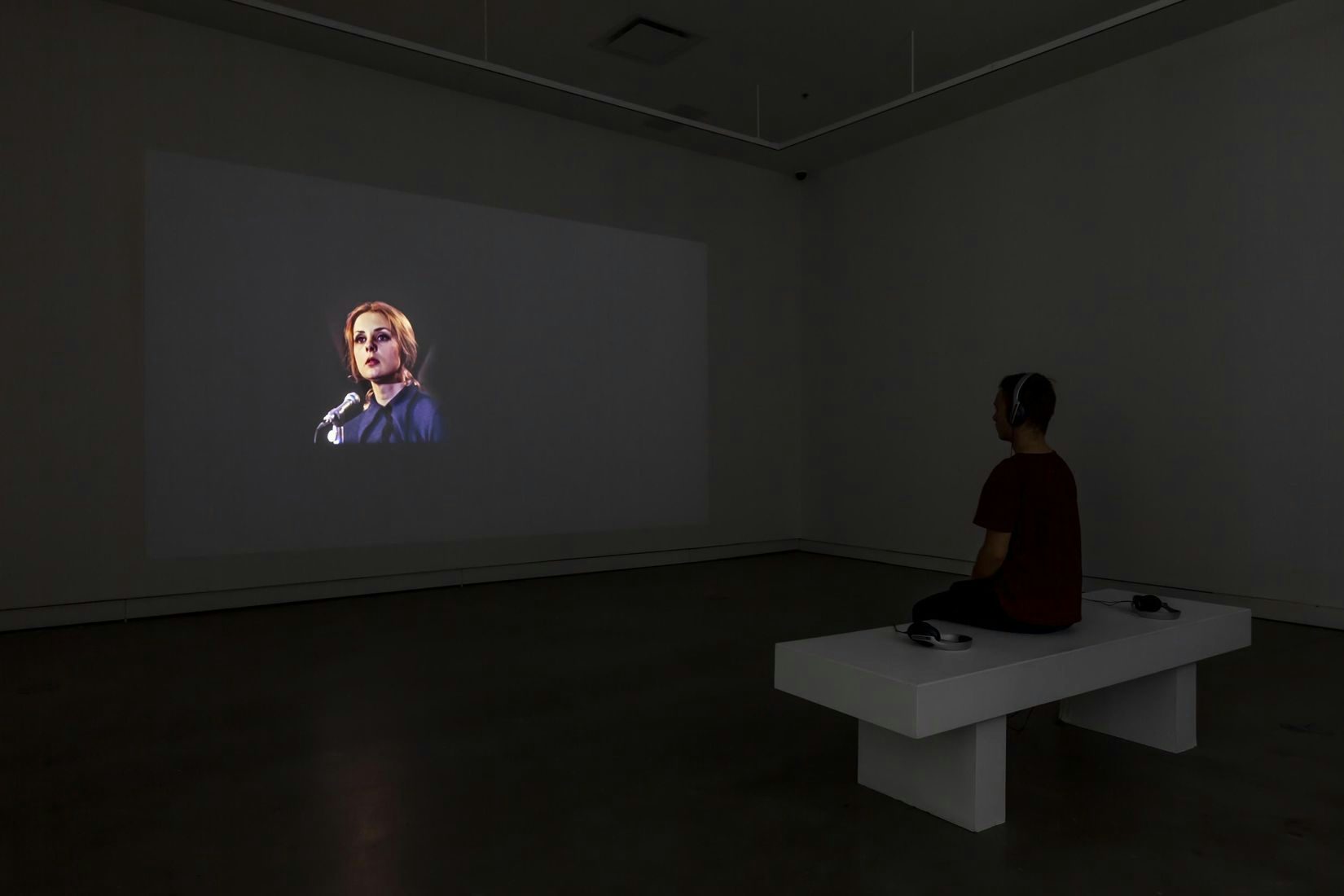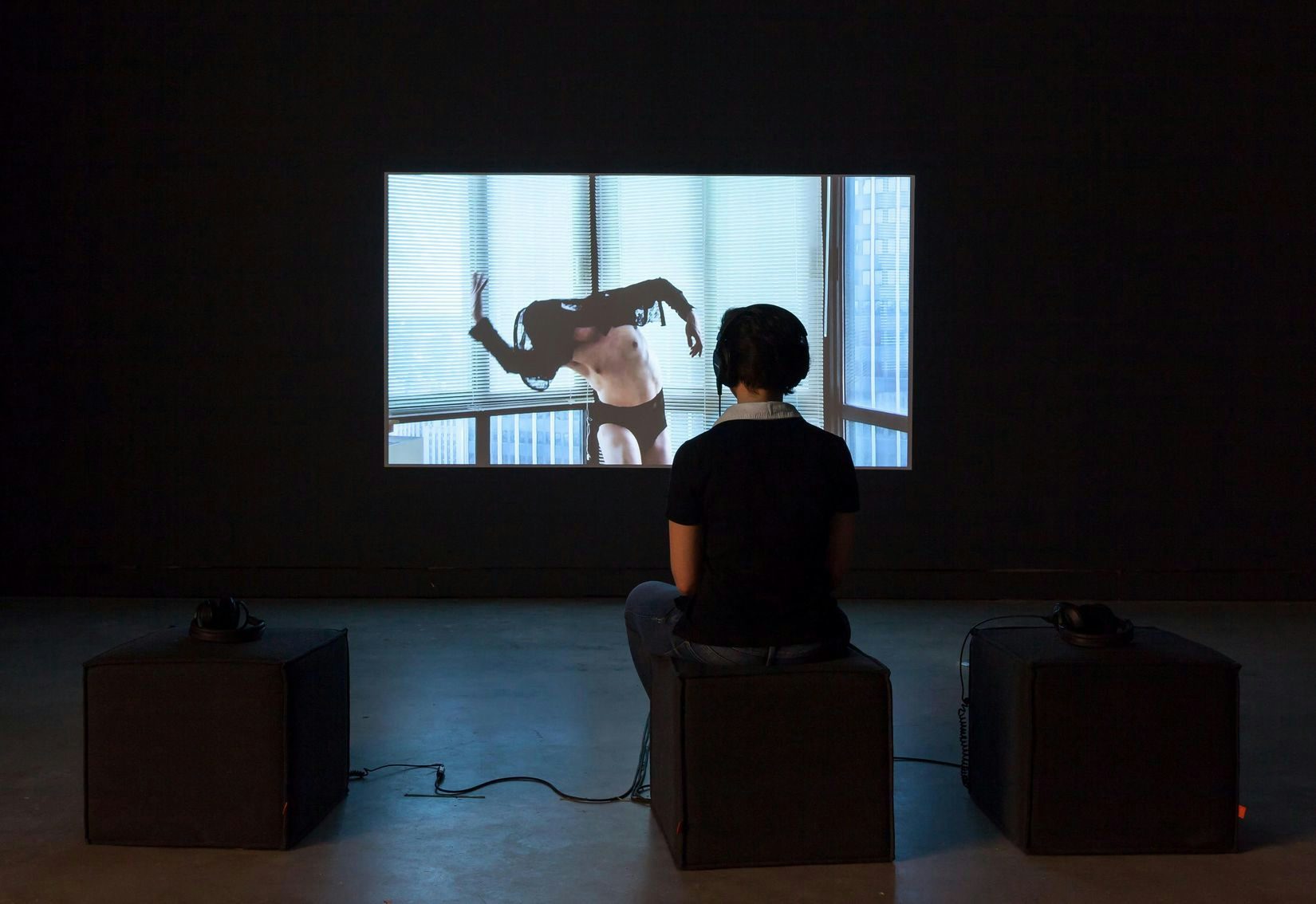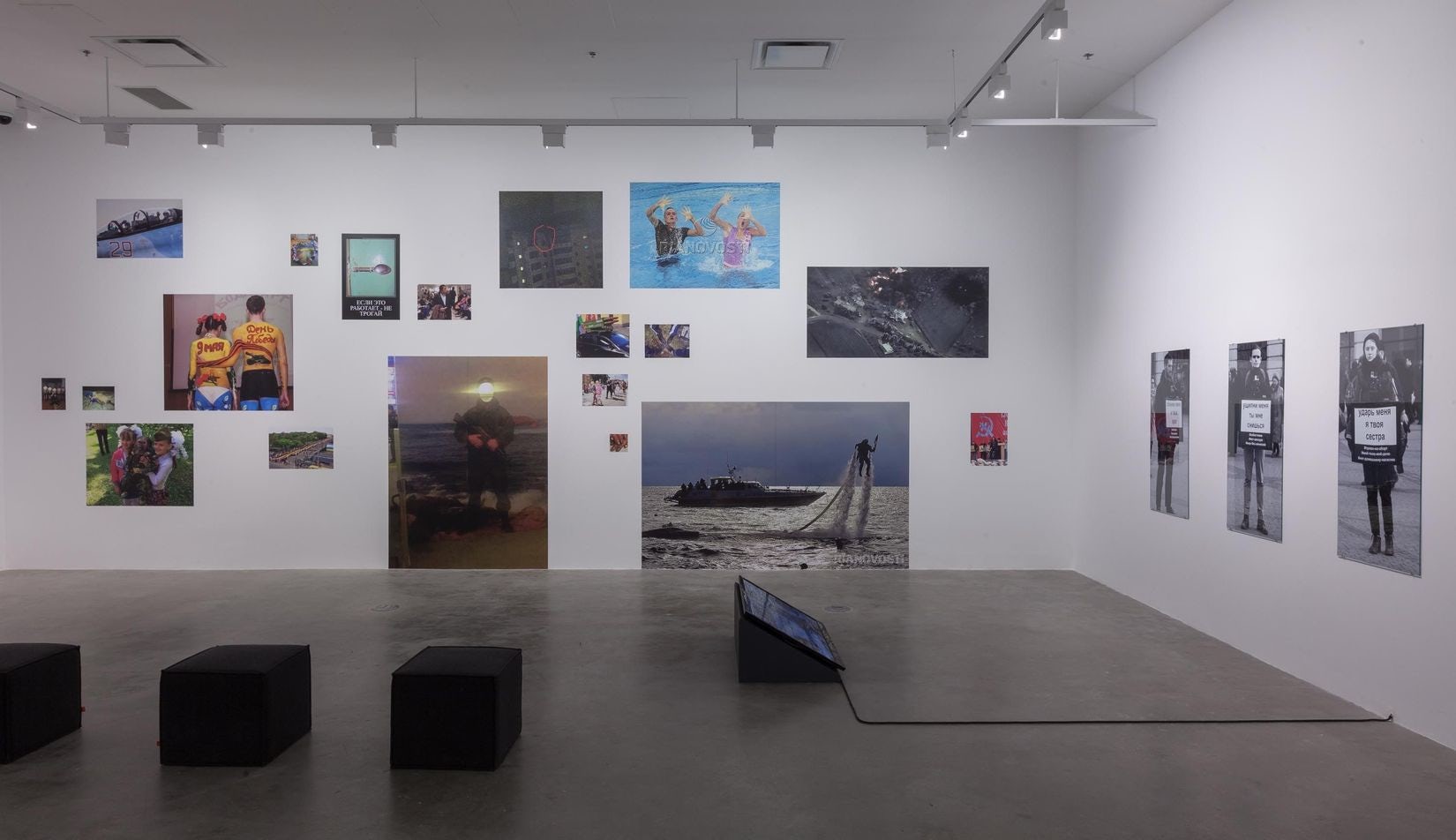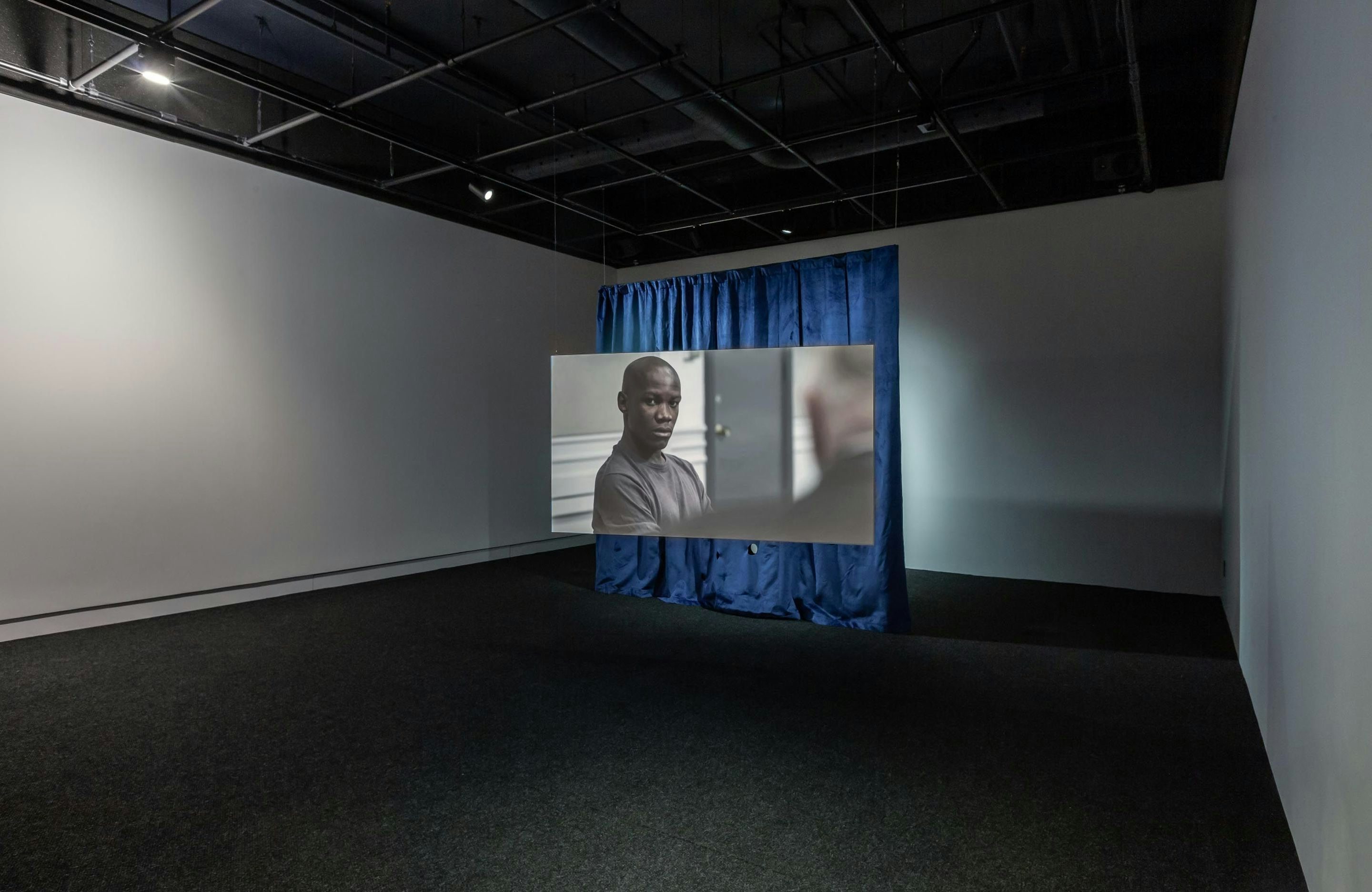
Jean-Paul Kelly
A sensation best described by another
2019.05.15 - 07.13
Jean-Paul Kelly’s work questions the limits of representation by examining complex associations in the production, reception, and circulation of documentary material, using found images and films often sourced from online archives. A sensation best described by another is his first solo exhibition in Montreal. It includes the three-channel video installation That ends that matter (2016–19) and the new photo-based sculpture Cite (Spectrum Colours Arranged by Chance) (2019), respectively referencing Jean Genet’s film Un chant d’amour (1950) and the work of artist Ellsworth Kelly.
The installation That ends that matter (2016–19) was first presented at the Delfina Foundation in London, UK. Its original production was made possible through funding support from the Ontario Arts Council, an agency of the Government of Ontario, with additional research support from the Film Society of Lincoln Center’s Kuzuko Trust Award and Delfina Foundation’s family of individual supporters. The new work Cite (Spectrum Colours Arranged by Chance) (2019) was produced with the support of the City of Toronto through the Toronto Arts Council.
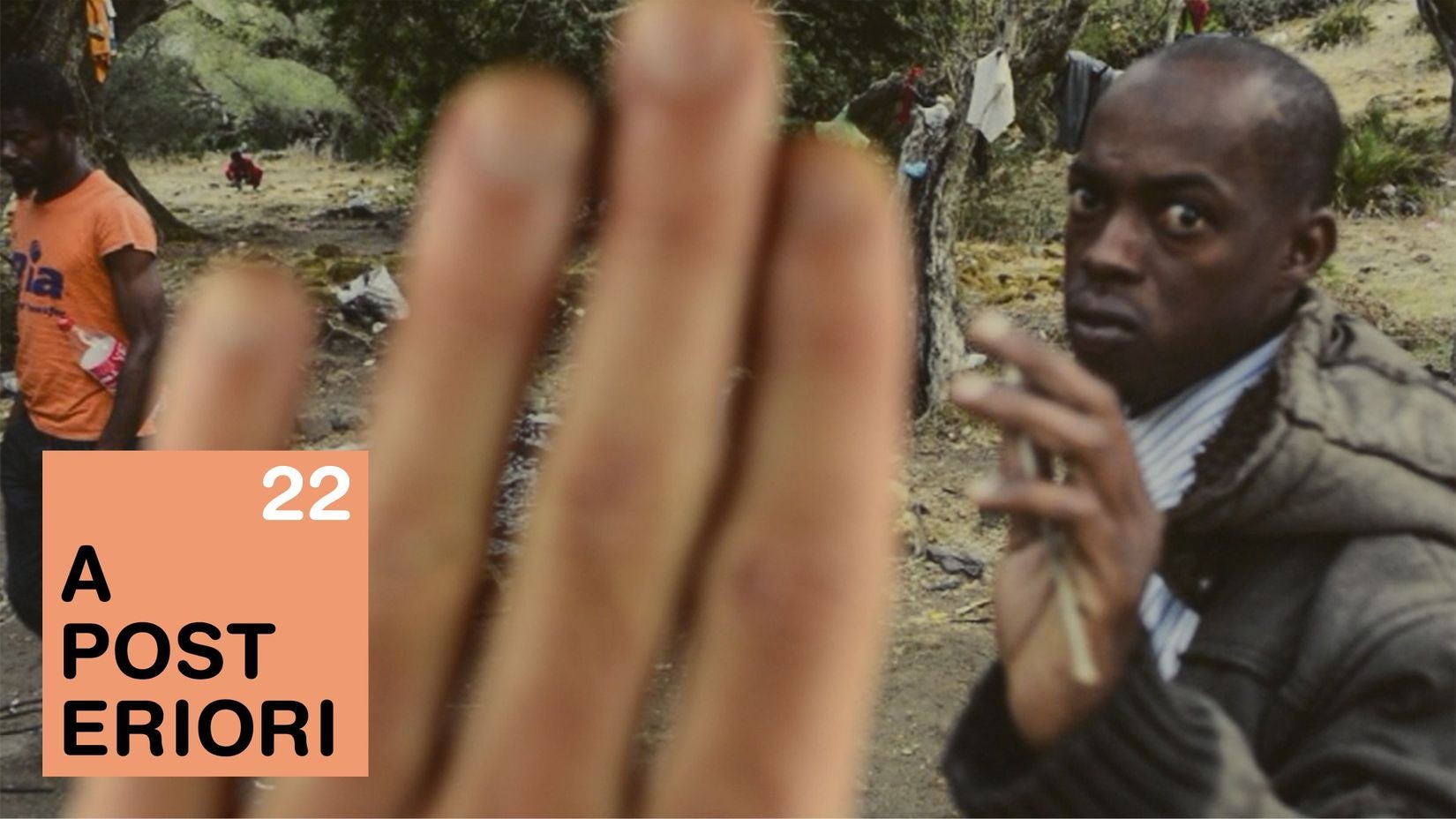
Visions of care
YANIYA LEE
In 2014, eight months into a relationship with an errant Dane that had taken me from Belgrade, where we met, through three continents and half a dozen cities, I found myself sleeping in a punk house in the 7th Ward of post-Katrina New Orleans. He was making music and wandering, and I was reading and trying to write. An old friend—an activist from Montréal—was in town and they invited us to join them, one early January morning, at the court case of Albert Woodfox, one of the imprisoned members of the Angola Three. Woodfox’s case was the culmination of numerous appeals against his inhumane incarceration—spent over decades in solitary confinement.
We arrived early, were checked for weapons before passing through the courthouse metal detector. Our friends arrived, a small group of the scruffy activists showing up to support a person whose humanity had been steadily chipped away month after month, year after year.
I left feeling even more confused and disconsolate. The judicial process was so mired in words, in law, in rhetoric, that it swallowed up all possibility for humanity, for an ethics of care, for connection or empathy. I learned that the courtroom is a place where all representation happens through words, strategically, as an arrangement of precedents and carefully hedged declarations. There, in that terrifying place, the stakes are high and ends are won at the expense of people, and their lived experiences, which fall by the wayside.
…
Jean-Paul Kelly’s exhibition A sensation best described by another revolves around a three-channel video installation, That ends that matter (2016–19), offering a measured platform in which to explore the dangers and possibilities within the entwined space of ethics and representation. A succession of sharp images forms a whole. Anxious gazes cut across a room. Fingers roam landscapes of taboo, bravery and brutality. A dot jumps, a circle widens. A staccato sound mimics their movement, blends with the white noise of judicial privacy. Created after a 2015 Delfina Foundation (London) residency during which Kelly visited one courtroom at the City of London Magistrates’ Court daily for eight weeks, the work is an attempt to translate the disturbing paradoxes of contemporary justice. To do so, Kelly, a deeply empathetic and intellectual artist, used the tool he knows best: aesthetics. Here and throughout the exhibition, which includes drawings and sculpture, he articulates the questions raised by the aesthetic rendering of personal experience and asks us to consider an ethics of seeing and sight.
Through touch, Jean-Paul Kelly intercedes into the images’ documentary claims. Through touch and its residues, he performs an act of witnessing. His touch changes, is hard and then soft. Revelatory or protective. His intervention is an act of intimacy that prompts a reconsideration of our set ways of looking.
Kelly’s new sculpture Cite (Spectrum Colours Arranged by Chance) (2019), is based on the redaction lines and photocopier marks from three pages of a declassified FBI file investigating the American Abstract painter Ellsworth Kelly. In Cite, traces of wear and editing are sources for what is seen. “Making art has first of all to do with honesty,” Ellsworth Kelly wrote in 1980. “My first lesson was to see objectively, to erase all ‘meaning’ of the thing seen. Then only could the real meaning of it be understood and felt.” In the late ’40s Ellsworth Kelly had shifted away from “men-orientated” figurative renderings. He wanted his work to be about structure and so he abandoned the idea of creating a representative image and instead began to compose. For him, form became content.
It’s comforting to think that life is made up of myriad overlapping perspectives and experiences, and that images—drawings, photographs, paintings—are how these moments are rendered. Artists create representations and suffuse non-objective elements like colour, shape, duration, and sound with their own principles. As an art writer, for a long time I struggled with how I perceive. I came to realize how much my frames and references had been predetermined—shaped by my education and by popular culture. My immediate judgements—my disgust, my sympathy—are triggered by what I see. I bring my own sense of value and fairness, of beauty and pain to any image I see, but these judgements are often shaped way before my encounter with artworks, with images.
…
What had been so disheartening to me about the words in the New Orleans courtroom was how disconnected they were from Woodfox’s lived experience. Law dissembles reality and lived experience. Moving through the works in A sensation best described by another, following the soft touch of Kelly’s finger and the static sounds, the porousness in the representational strategies of these works belies any possible objective capture of their subjects. A fissure is made between the event, the scene, and its apprehension. These compositions impart a meaning that is more than any referent; it has Kelly’s intention in it, and ours as well.
Yaniya Lee is a Toronto-based writer and editor interested in the ethics of aesthetics. Lee was a founding collective member of MICE Magazine and is a member of the EMILIA-AMALIA Working Group. She teaches Art Criticism at the University of Toronto and works as associate editor at Canadian Art.
